Last Updated on June 29, 2022 by Rebecca Huff
What does your fridge look like? How about your pantry? Let's get real. Is it full of healthy foods or food that you wouldn't want to admit you've been eating? Or maybe you're like me and your fridge is nearly empty! It's time to go shopping.
Transitioning to a real food diet can be hard. If it were easy, there would be fewer health problems and a significantly lower rate of obesity in America.
A great time to reboot your kitchen is when your cupboards are starting to resemble Old Mother Hubbard's! Since it's not in everyone's budget to do a complete overhaul, replacing junk foods with healthier versions, some people choose to start when it's slim pickings in the kitchen. That's ok! Just be prepared for the temptations!
Keeping your fridge stocked with healthy foods will help you make better choices. That looks somewhat different for different people. Spend some time thinking about what health looks like to you. If you have no idea where to start, you can Start Here.
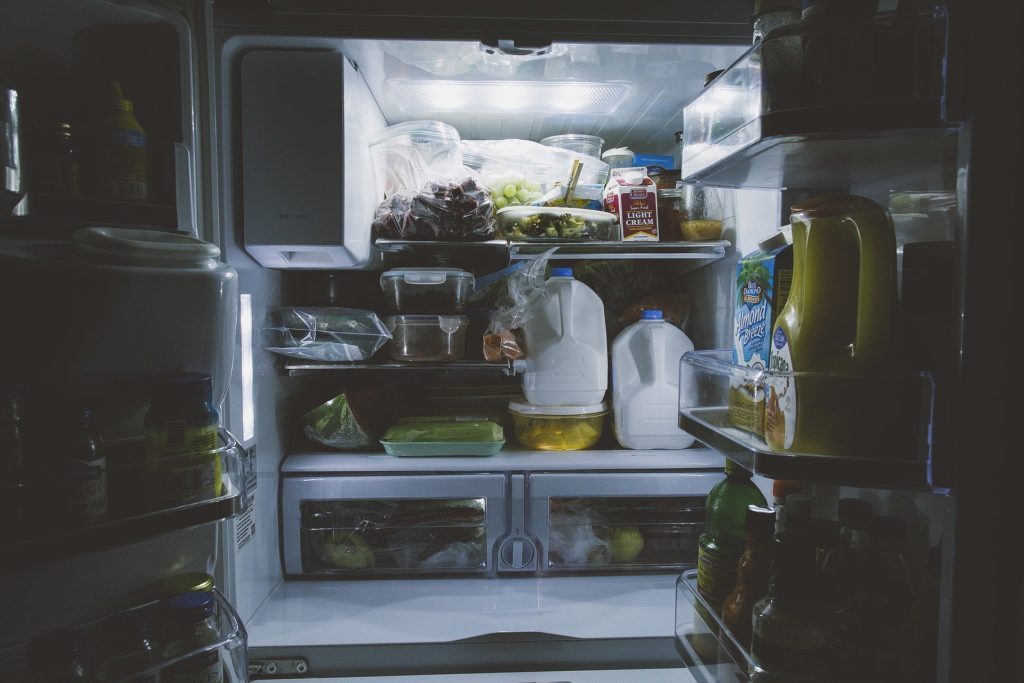
Getting Started – Take it easy on yourself.
One of the best ways to have a smooth transition is to prepare yourself for what you know will come. Cravings are your enemy! The best way to make sure you don't fall prey to those desires is to remove problem foods from your pantry, fridge, and freezer. Trust me, when that late night craving for ice cream hits, you stand a better chance of resistance if you have to get dressed and drive to the supermarket to indulge yourself.
I always hate to waste food, but I also know that it is hard to maintain a high level of motivation. If you keep certain ingredients around until you use them up, what will likely happen is that the temptation to eat something you've decided to avoid will become overwhelming. Later the thought “well, I've already blown it for today so may as well go ahead and eat whatever then start over tomorrow.”
If you want to achieve success, adhere to the saying, “out of sight, out of mind.” I suggest that you donate these items to your local food bank, homeless shelter, or even a church pantry. We donate ours to a local homeless shelter where we volunteer.
I know some would say that donating these items to someone else is like saying it's ok for them but not for you. I have struggled with these feelings myself, but I have also seen the foods served at homeless shelters. What you have to donate will most likely be an improvement. There were times when, as a single mom, I would have loved for someone to clean out their pantry and give me their unwanted items. So do whatever feels right for you.
The goal is to get rid of your junky junk food and replace it with real wholesome foods that will build your body up instead of tearing it down.
What to purge
What are some of the items I suggest you ditch? How about starting with items that contain High Fructose Corn Syrup, Sugar, Food Coloring, Hydrogenated anything, Monosodium Glutamate, Hydrolyzed anything, and foods made with soy? Basically, if it has an eternal shelf life (unless it's honey!) you might want to toss it. Take a look at this pantry makeover I did for a friend.
Time for a Fresh Start
We want to look at our pantry, fridge, and freezer as a fresh slate. Imagine your food storage area as a toolbox for your good health!
- Gather some boxes for the items you will donate, for example, items still in date that have never been opened.
- Have trash bags for the items you need to toss, including out of date items or half-consumed items that cannot be donated.
- Start thinking about what you want your new healthier kitchen to look like. What type of eating plan do you want to follow? I suggest following a simple whole foods diet. Meaning real ingredients.
- Make sure to grab paper and pen to jot down anything you might need to pick up at the supermarket later.
- MOST important: take a before picture of your fridge, freezer and/or, pantry so you can take pride in what you have achieved!
- Bonus: Not necessarily a focus of this challenge but fun to do if you love organization. If you really want to go all out, consider getting storage containers for your bulk items like beans and lentils, rice, pasta or whatever you buy in bulk. Think about how you will store things like onions, garlic, sweet potatoes, bananas, and other fruits and vegetables that do not need to be stored in the refrigerator. If you have hard to reach corners in your storage area, consider lazy susans in all those pesky places! I'll list some of the things I use in my pantry below.
I will post the kickoff the last day of this month, so check back because we will all share the junky junks that we are ditching!
Here are some of the pantry tools I have for better organization:
Lazy Susan – I have bottles of oil, molasses, and other items on these spinning shelves so that I can easily gain access to the items in the back.


Shelf Organizer – If you buy canned items you might like a shelf like this because it makes seeing all the labels much easier. I usually store coconut milk (lite, full fat, cream), organic beans, pumpkin, and such on mine. I don't buy many items in cans, but there are a few things, like full-fat coconut milk that I always keep on hand.
Pull down spice rack – I keep this inside the cabinet beside my stove for easy access while cooking. I love keeping lots of different spices on hand. This makes it simple to just pull down and see everything you have.
Half Gallon Jars with Wide Mouth openings – These are great for storing beans, rice, and other bulk items you buy. I love the way they look on my shelves and seeing the food inside encourages me to prepare whole food meals more often.

Oxo Containers – This is something I try to find on sale as they can certainly add up if you buy them all at once. This is another way to store food that looks beautiful plus keep foods fresh.
Hanging Basket for fruits or vegetables – I like to keep this in my pantry for onions, garlic, sweet potatoes and such.
Fruit bowl with banana hanger – I keep this on the counter full of apples and bananas so the kids can just grab healthy snacks when they need a boost.
Glass containers for leftovers – I try to avoid plastic as often as possible. Over the years I have built up my supply of these glass containers to store leftovers in. The lids do have some plastic on them, however, they are usually not in contact with the food. I just have to remind my husband not to leave them at work and pray my son doesn't try to warm them up in the oven with the lid still on. Yes, we learn these things when we are ten.
I hope that this has flipped the switch on your imagination so that you are motivated to get in your kitchen to work on making it as healthy (and organized) as possible.
We want to give ourselves a fighting chance at reaching our goal to become healthier than ever this year by ditching the junk in our kitchens!
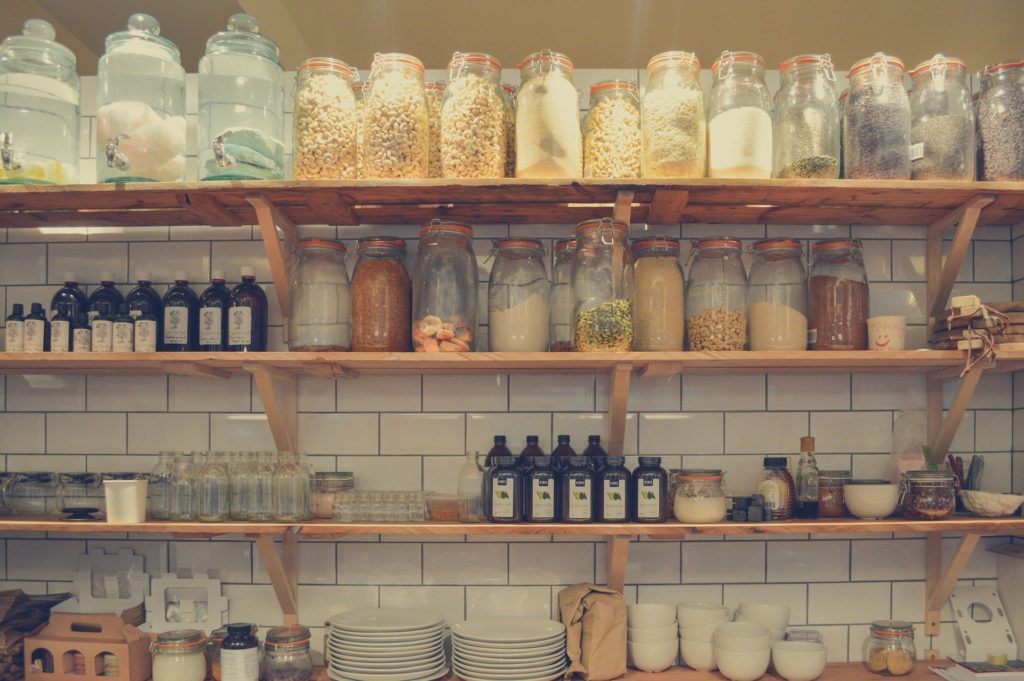
Here are some toss and keep suggestions:
Toss
- Candy – jelly beans, hard candy, milk chocolate, etc.
- Chips – everything fried, also Doritos, Cheetos, and any other artificially orange foods!
- Cookies – especially Oreos, which are almost like a legal form of crack!
- Microwave popcorn – due to bags lined with perfluorooctanoic acid (PFOA)
- sugary cereals
- canned soups
- coffee creamers (believe it or not some contain titanium dioxide and trans fats which can impair memory) read “you're the titanium dioxide in my coffee” or “the truth about coffee creamers will make you cry in your coffee.”
- unhealthy oils
- white sugar, artificial sugars (such as Splenda), and pancake syrup
- ice cream
- Sports drinks and sodas – lots of reasons to quit this habit, quit diet sodas too!
- Fruit juice – yes even 100% fruit juice has fructose equivalent to several doughnuts, and unfortunately, it is the kind that causes belly fat. Try detox water instead.
- Brightly colored over-sweetened yogurts
- foods with high fructose corn syrup (check the ingredient label)
- foods with monosodium glutamate (MSG also goes by these sneaky names *scroll down to the bottom of page)
- frozen meals (even the ones that look healthy)
- hot dogs
- farmed fish
- pickles with artificial colorings (check the ingredient labels!)
and…
Keep
- fresh vegetables
- fresh fruit is a much better choice than fruit juice because the fiber
- organic popcorn for air-popper
- yogurt with very little to no added sugar; plain yogurt and Greek yogurt can be sweetened with a little honey or fruit
- figs are very healthy
- dark chocolate 70% cacao or higher
- maple syrup and honey, even coconut sugar are healthier sweeteners
- cheeses like feta
- real cream (for your coffee and more!)
- guacamole is fantastic for topping healthy tacos, and also for dipping veggies in
- hummus for dipping vegetables in is perfect for a snack
- wild caught fish, including Alaskan salmon in cans, Wild Planet Tuna
- naturally fermented pickles, cabbage (sauerkraut), and other fermented vegetables
Obviously, this is not an exhaustive list; the goal is to get started but learn to read ingredient labels to decide what is healthy and what is not. To take this challenge to the ultimate extreme, I challenge you to focus on tossing all the rules and just eat real food.
Seriously make sure you get this: The Healthy Kitchen Challenge is not about making you a slave to a strict set of rules. Don't let food become a stumbling block that creates constant guilt! Food is a gift from God and should remind us of His goodness.
I Corinthians 10:31 says, “Whether therefore ye eat, or drink, or whatsoever ye do, do all to the glory of God.” God does care what I eat or drink and there is a way of doing things that will bring more glory to God.
In Mark chapter 7, Jesus was speaking to the Pharisees, “Nothing outside of a person can enter and contaminate a person in God’s sight; rather, the things that come out of a person contaminate the person…That’s because it doesn’t enter into the heart but into the stomach, and it goes out into the sewer.” What Jesus was saying is no food could contaminate a person in God’s sight.
Menu planning, shopping, cooking, eating, dieting, fasting; should be done with thankfulness, for the glory of God, and out of a willingness to serve others. “Let no one seek his own good, but the good of his neighbor” 1 Corinthians 10:24. Eating for health helps me serve my family better by giving me energy and the building blocks I need for a healthy body. This also means I have to stop sabotaging my health by using food to treat my emotions. Read what Jami has to say about Perfect Portions!
Eating for health gives me more opportunity to serve Him in other ways as well. For example, having the energy, creativity, and clarity of thought to create this website to share with people I care about; (you!)
Isn't that a beautiful reminder? So remember, that verse as you are deciding what to keep and what to toss. It's permissible but is it beneficial? Ask Him.
Now get in that kitchen and start tossing, then grab those keys and get yourself to the supermarket and stock up on some healthy staples! Before you do, make sure to add a comment below for each item tossed (or as many as you dare to list!) The real prize is that you will be eating healthier and therefore feel better, but I want you to look forward to something tangible! So…
At the end of the month, two people will be selected from the comments on this post to receive a new cookbook! Look how beautiful this clean cooking book is! I have been making recipes from this one from my Online ThatOrganicMom Cookbook Club. It's also one of the cookbooks in my Healthy Cookbook Guide.

An organized pantry can go a long way towards helping you reach your health goals. Once or twice per year, go through every pantry shelf to make sure each item is serving your health goals. When you get it the way you want it reaching your goals will be much easier. Below you will find some free printables to help you shop for healthy pantry items!
A well-stocked pantry will look different for each of us, that is because of our varying diets. Vegan, Vegetarian, Paleo, Whole30 and food allergies, Gluten Free, Dairy Free, etc. So not everyone will have all the same items, but there are some basics that most people can use. Here's a cutesy list to get you started: Stocking the Healthy Pantry and here's the link if you prefer a plain Printer Friendly Stocking the Healthy Pantry List.
Most of us are on a budget so here are a few tips that should help reduce the grocery bill:
- Plan meals! Surveys show that planning meals saves money on the grocery bill. Even if you don't want to plan the meal yourself, it is worth downloading free menu plans with shopping lists or buying a menu plan! Even Dave Ramsey, THE money expert, recommends using menu plans.
- Go back to basics. If you roast a chicken on Sunday, save the bones to make broth overnight then use it for a lovely soup. Take dinner leftovers to work for lunch the following day.
- Buy in bulk and watch for sales. (if you have a freezer stock up on real food, such as meat, when it goes on sale or consider purchasing in bulk from a local farmer)
- Use coupon apps and rebate apps such as ibotta, Checkout 51 and others.
- Keep vegetables at eye level in your fridge so you remember to use them before they go bad and don't buy more than you can use in a week. Learn to store foods properly.
- Utilize your local farmers' markets, community supported agriculture, grow what you can and prepare from scratch.
Keep in mind that cheap processed foods are addictive. Remember, just because an item may have a low price doesn't mean the price of putting it in your body will be cheap!!
The best “bargains” at your grocery store may not always be one in the same with the best choices for your health. Watch out for sales and low prices on cheap, processed pseudo-foods and realize that even if you can get a can of processed ravioli or a bag of chips for under $1, that money is being essentially wasted because the food is doing absolutely nothing beneficial for your health.
You're better off spending that dollar on a pound of string beans or zucchini, or putting it toward a pound of grass-fed meat, than you are throwing it away on processed junk food. (mercola article removed or moved)
Healthy people tend to eat real food without unnecessary exclusions. This means that they eat a good balance of foods from all the different food groups and eliminate or minimize processed foods.
26 items healthy people have in their pantry
- avocados
- garlic
- sweet potatoes
- onions
- walnuts and other healthy nuts
- chia seeds
- oats
- coconut milk
- coconut oil
- olive oil
- avocado oil
- coconut cream
- dried beans
- healthy grains such as sorghum, farro and quinoa
- apple cider vinegar
- bulk herbs
- bulk spices
- honey
- sunflower lecithin
- gelatin & collagen
- wild salmon, canned
- sardines and anchovies
- protein powder (whey or pea protein is great)
- crock for fermenting foods
- glass storage containers
- juicer or a growler for buying fresh pressed vegetable juice
One way I found that has peaked my interest in eating healthy over the past 15 years is keeping my cookbook shelf packed with enticing cookbooks. When looking for cookbooks, I prefer ones that have at least half of the recipes pictured. The thing that makes me want to prepare and eat healthy meals is usually an appetizing photo. That's why Pinterest is so popular and my most popular board is “Eating Healthy” <======click here to follow it!
I wanted to share what my fridge looks like when I bring home my groceries to give you an idea of how I stock my healthy fridge. This will look slightly different for everyone depending on food preferences and dietary restrictions such as those who are completely dairy-free. The only dairy I consume is heavy cream; while my children and my husband do eat a small amount of cheese, sour cream and yogurt.
Items in the back of my fridge that aren't visible include jars of bone broth, fats for seasoning my skillets, bulk cheese for my kids to use on taco night, cut cucumbers, pre-measured 1 tablespoon blocks of coconut oil for ease of use, and washed lettuce.
If at all possible, put groceries away properly the moment you get home from shopping. Quickly storing produce will ensure that your purchases stay fresh until you are ready to use them. When shopping for fresh produce, it is best to buy only items that you will use up within a week.
You may notice that I use my crisper drawers for things like sour cream and yogurt. I have found keeping them corraled in a drawer makes them easier to find and frees up space for my veggies to take center stage.
Keeping vegetables and fruits at eye level will help you remember to eat them. We all know what happens to a bag of spinach shoved in the back of the crisper drawer. Long forgotten! If your fridge has an additional snack drawer, consider keeping healthy snacks such as grapes, apples, pears, cheese sticks, carrot sticks, celery sticks and a jar of nut butter there for grab and go eating.
- Carrots should have tops removed and stored submerged in water (change the water every 4-5 days)
- Radishes should be kept in a container unwashed, wash just before using
- Herbs and green onions can be stored upright in a small amount of water
- Leafy greens are best stored wrapped in a clean kitchen towel or the original container; it is best to wash before storing if not already prewashed. However, save cutting until right before eating as opening the lettuce pores can cause them to go brown due to oxidation. Cut lettuce in bags at the supermarket has had most of the oxygen removed and replaced with carbon dioxide and nitrogen.
- Avocados should be stored at room temperature, not in the fridge
- Apples stored in the fridge should be kept in a plastic bag and away from lettuce as the ethylene apples put off will turn lettuce brown
- Don't wash berries until you intend to use them, otherwise, they will rot faster, purchase already cut berries for use within 2-3 days.
- Citrus fruits can be stored on the counter for a couple of weeks, longer in the fridge
- Tomatoes should not be stored in the fridge as it diminishes flavor
- Store root vegetables in a cool, dry place, not in the fridge
Using crisper drawers for jars, tubs, and boxes allows more space for veggies to take center stage!
Other items I keep in my healthy fridge for my family include:
- organic polenta
- Kerrygold butter
- Neufchatel Cheese (1/3 fat cream cheese)
- mushrooms
- plain yogurt
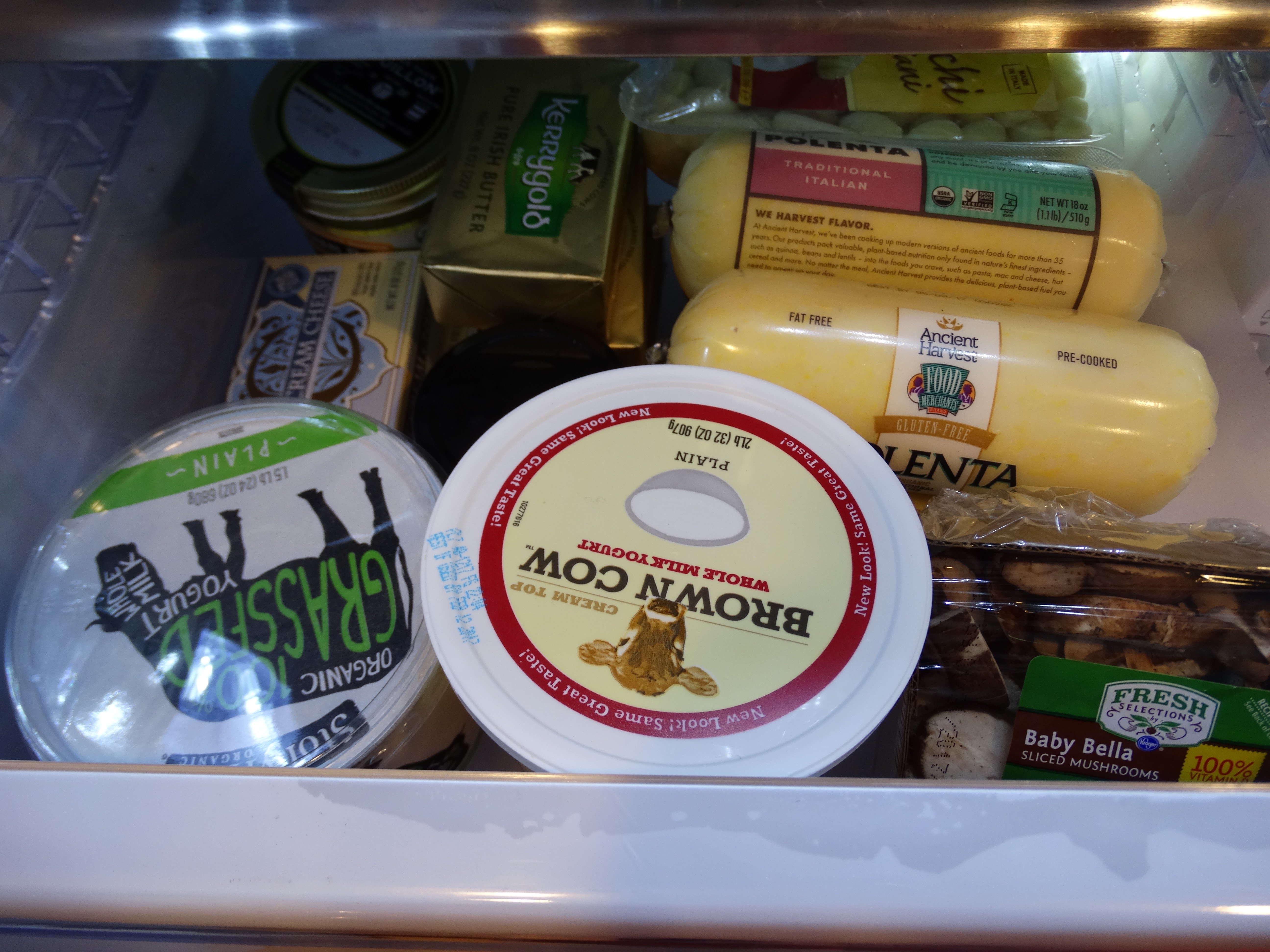
- nut butters
- sour cream for Taco Tuesday
- various types of miso
- red pepper paste for Korean dishes
- other condiments used infrequently
- Sugar-free salsas
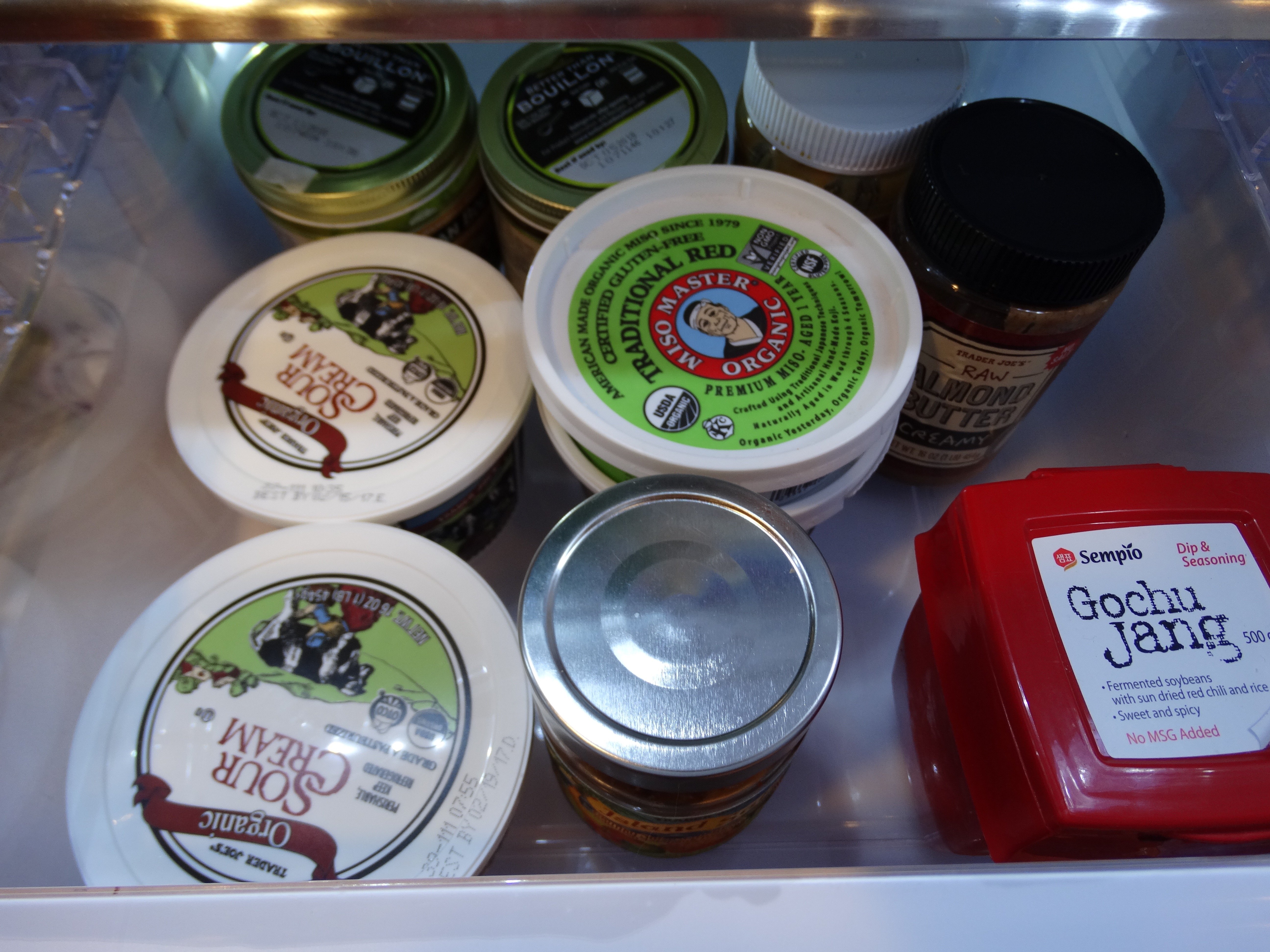
In the side of my fridge door, I keep vitamins that must be refrigerated such as probiotics, etc. Obviously, I am not a fridge minimalist, as you can see the other side-door contains various cooking ingredients and condiments:
- coconut aminos
- soy sauce
- tamari
- rice vinegar
- pickles and other fermented vegetables
- ghee
- condiments such as mustards, sugar-free mayo, sugar-free organic ketchup
- apple cider vinegar and other types of vinegar
- pickled ginger for sushi night
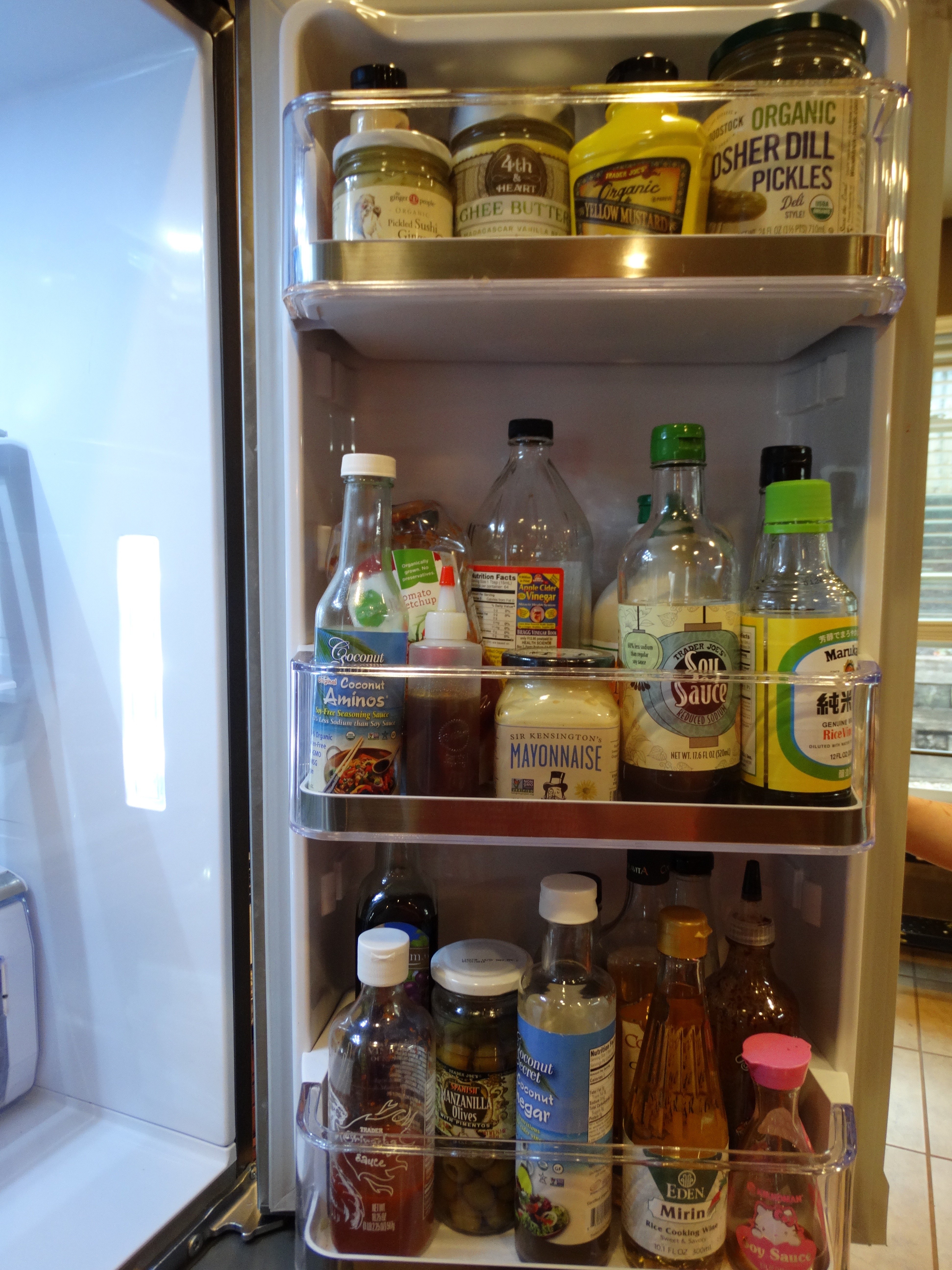
See the Hello Kitty Soy Sauce bottle in the bottom right corner of the picture above? My daughter really wanted it, so I poured out the (yucky) soy sauce and filled it back up with coconut aminos! The things we do for our children!

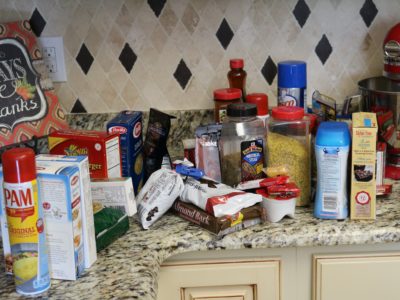






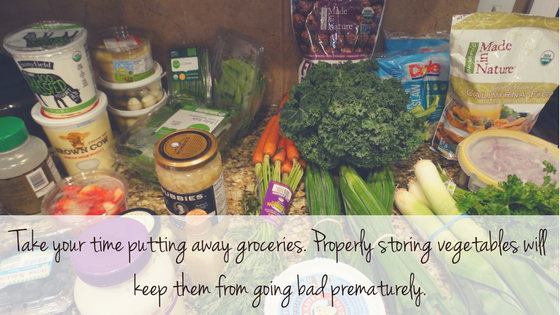
 Bowls, the hot new trend you are gonna love
Bowls, the hot new trend you are gonna love
Leave a Reply
You must be logged in to post a comment.